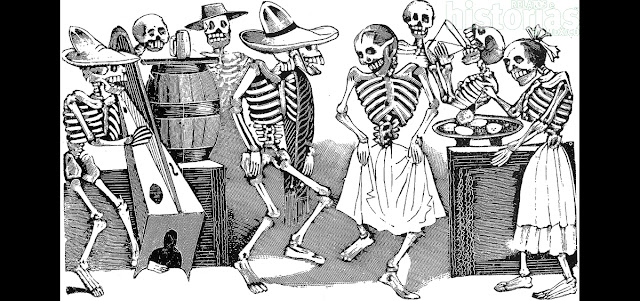Calaveras and Death in Mexican folklore
My representation of "Calaveras" by Jose Guadalupe Posada (1852 - 1913).☠️ Skeletons and death are repeatedly present in the Mexican folklore and art as part of our pre-Hispanic roots and culture. Keep reading for more about this👇🏼
 |
| La huesuda, (cropped and original image), ink and graphite on paper by Salas, E. (2020) |
 |
| Engraving by Jose G. Posadas, 1913 |
The Death is called in several funny names in the Mexican culture, most of them are euphemisms to hide our fear towards death itself (like in my drawing, I used the name "La huesuda", which means "The bony").
This is, however, not entirely truth; the relationship of the Mexican with the death is about "flirt and seduction", an "ironic intimacy" to remind us that death is for all of us without discrimination, thus there is a certain familiar trust and we celebrate it with irony (poetry, literature, art, music, legends, movies, etc.) and vivid festivities, such as El Dia de los Muertos.
For
instance, as Japan has their specialty poetry "haiku", in Mexico we
have satiric poetry called "Calaveras", which could be from sonnets to
complex poetry. It's existence is known since the novohispanic era (1519
- 1821), however Spanish monks censured any kind of "calaveras", and
it's only at the beginning of the XX century that takes the form we know
nowadays. It's all about ingenious ways to describe death and even mock
it. E.g.
Estaba la muerte en cueros
sentada en un taburete,
en un lado estaba el pulque
y en el otro el aguardiente.
"There
was the naked Death sat down on a bank, on one side there was the
pulque (Aztec liquored beverage) and at her other side, there was the
schnapps".
I remember my grandmother telling me this kind of calaveras and more; songs to dance, play and celebrate death.

Comments